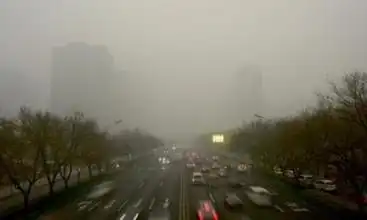China saw the smog coming and last week issued its first red alert of the year for 23 cities.
As of Saturday, the smog covered 10.1 million square kilometers, according to the country's Ministry of Environmental Protection
In Tianjin, officials shut down expressways, increased public transportation capacity by 15% and ordered cars to run on alternate days based on whether the vehicles' license plates end in odd or even numbers.
Beijing also restricted automobile traffic, while in Shandong Province, officials closed toll gates on four expressways.
Other measures undertaken by affected cities include suspending construction projects, canceling classes for kindergardens and primary schools and closing or reducing production at some factories.
Lives and livelihoods, economies and communities depend on convenient, reliable and affordable energy to prosper and grow. People today have never been more connected. More and more of us are enjoying better opportunities, better health and a higher standard of living.
Most of the energy we use today comes from oil and coal, and increasingly from natural gas. These hydrocarbons power, heat and cool homes and workplaces, and fuel transport systems that take us to work or school, or bring us to a holiday destination. They enable industries that sustain our lives, and provide the chemical ingredients to make most of the products we buy – like the device you are using to read this page.
Global demand for energy is rising, driven by growing population with rising living standards.
By 2050 the number of people on the planet is forecast to grow to 9 billion - that’s nearly 2 billion more of us than today. Many people in emerging economies will join the global middle class. They will buy refrigerators, computers and other appliances that consume energy. And many will buy cars, more than doubling the number on the road.
Our cities increasingly provide the heartbeat of our economy. Around three-quarters of the world’s population will live in cities by mid-century, putting more pressure on the food, water and energy resources essential for our shared well-being and prosperity.
Experts agree that global energy demand is likely to double by 2050 compared to demand in the year 2000. At the same time, tackling climate change caused by carbon dioxide (CO2) emissions and other environmental stresses has never been more important.
Meeting these challenges will require a radical change in the global energy system and a range of new energy sources. Because the energy system is so large, and demand for energy is rising so quickly, to achieve these changes will take a huge collective effort.

